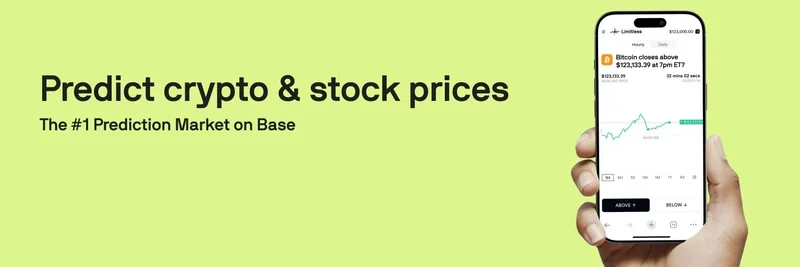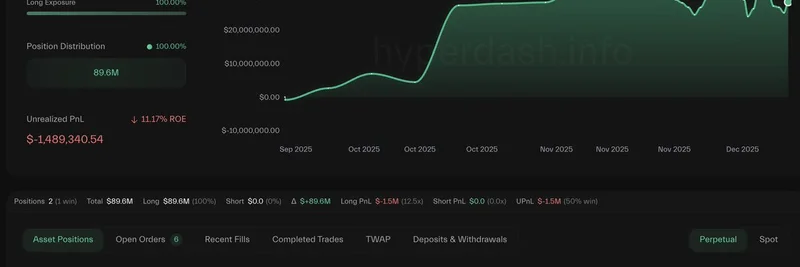Quick take (TL;DR)
- LMTS is the ERC‑20 utility token of Limitless, a fast, social prediction market built on Base.
- Total supply capped at 1 billion; allocations span investors, team, ecosystem rewards, treasury, liquidity, and presales.
- Utility includes staking, governance, fee sharing, reduced trading fees, and points multipliers.
- Limitless uses a Central Limit Order Book (CLOB), instant market resolution (often 30–60 minutes), and no liquidation risk.
- Backed by Coinbase Ventures and other notable funds; processed $250M+ in trading volume since launch.
- LMTS trading is available on Base DEXs and select CEXs; you can also track and trade via GMGN.AI’s LMTS page: https://gmgn.ai/base/token/fV1R5sZ5_0x9eadbe35f3ee3bf3e28180070c429298a1b02f93
- Key risks: regulatory uncertainty, vesting and allocation concentration, market volatility, competition, and audit clarity.
What is Limitless and LMTS?
Limitless is a decentralized social prediction protocol on Base, designed to make forecasting markets fast, accessible, and interactive. Prediction markets let you trade on outcomes of events—from crypto prices and stocks to sports, weather, and pop culture.
LMTS (contract: 0x9eadbe35f3ee3bf3e28180070c429298a1b02f93) is the native utility token powering Limitless. It’s an ERC‑20 token used for staking, governance, incentives, and fee reduction within the ecosystem.
Limitless emphasizes:
- Speed: markets often settle within 30–60 minutes.
- Defined risk: trades are structured without liquidations or margin calls.
- Social and community: anyone can create markets; engagement is rewarded.
- Scale: over $250M in cumulative trading volume, positioning Limitless as a leading prediction venue on Base.
Team and backers
- Core team: CJ Hetherington (CEO), Roman Mogylnyi (COO), Dima Horshkov (CPO).
- Funding: $7M across two rounds, including a $4M strategic led by Coinbase Ventures and a $3M pre‑seed led by 1confirmation.
- Additional investors: Maelstrom, Paper Ventures, Collider, F‑Prime, DCG, Node Capital, Arrington Capital, WAGMI Ventures, Punk DAO.
- Advisor: Arthur Hayes, co‑founder of BitMEX.
How the protocol works (in plain English)
- Central Limit Order Book (CLOB): an order book model where buyers and sellers place bids and asks; it’s common in stock and crypto exchanges and enables efficient matching and tighter spreads.
- No liquidation risk: you’re not borrowing or using leveraged positions with margin calls; you buy outcome tokens with known maximum loss.
- Instant resolution: markets settle quickly (often 30–60 minutes), so capital isn’t stuck for long periods.
- SocialFi: users can create their own markets and build communities around topics they know best.
- Cross‑chain ready: while natively on Base, the design considers multi‑chain interoperability (e.g., via Chainlink CCIP).
Tokenomics at a glance
- Total supply: 1,000,000,000 LMTS (capped).
- Indicative allocation:
- Investors: 25%
- Team: 25% (some sources cite 28%; team allocations mention longer vesting, up to 10 years in certain references)
- Ecosystem rewards (airdrops & incentives): 24.37%
- Treasury: 13%
- Liquidity: 10%
- Kaito presale: 1.37% (note: some materials reference 20M LMTS offered at $0.05—2% of total supply; allocations may differ across sources)
- Echo round: 1.26%
- Private sale: 1.5%
Vesting highlights:
- Airdrop: 100% unlocked at TGE (Token Generation Event), enabling immediate liquidity for recipients.
- IDO/Kaito presale: commonly reported as 25% unlocked at TGE with linear vesting over 3 months; alternate sources mention 50% at TGE and 50% after 6 months.
- Investors & Echo round: 0% at TGE; 6‑month lock, then 24 months linear.
- Team: 0% at TGE; 12‑month hard lock, then 24‑month soft lock (some references note longer 10‑year structures).
- Treasury: 0% at TGE; 6‑month lock, then 24 months linear.
Utility:
- Staking rewards and points multipliers for incentive programs.
- Governance voting on protocol parameters and market rules.
- Fee sharing and ecosystem rewards for liquidity providers, market creators, and active traders.
- Reduced trading fees for stakers.
- Buybacks: trading fees on Limitless are used to buy back LMTS, aiming to reduce sell pressure and align incentives.
Market performance snapshot
- TGE and airdrop claim began around October 22, 2025.
- Early trading saw strong demand: price spiked ~200% within 24 hours; volumes surged >7,000%.
- Kaito Launchpad: $200M+ in requested allocations for a $1M raise.
- As of late October 2025 (data varies by source and may change quickly):
- Circulating supply: ~131.6M LMTS.
- FDV: ~$312.24M (assuming full 1B supply).
- Reported market cap figures vary widely (e.g., $41M–$423M), reflecting fast‑moving price discovery.
- 24h volume: tens of millions, occasionally over $60M.
Where to trade LMTS
You can trade LMTS on Base and select centralized venues. Popular pairs include LMTS/USDC and LMTS/WETH.
- DEXs on Base:
- CEXs:
- WEEX Exchange (LMTS/USDT spot)
- Analytics and trading:
Tip: If you’re comparing prices across venues, always double‑check slippage and fees. On DEXs, ensure the pool has sufficient liquidity to avoid large price impact.
Key risks and considerations
- Regulatory uncertainty: prediction markets can face gray areas, especially for politics and sports; rules differ by jurisdiction.
- Allocation concentration: a significant team and investor share (25–28% for team in some sources) can create sell‑pressure risk as tokens vest.
- Volatility: LMTS is in price discovery; expect wide swings and rapid volume shifts.
- Competition: platforms like Polymarket and other prediction projects vie for user attention and liquidity.
- Security audits: while audit partners are referenced (e.g., CredShields), comprehensive public audit details for LMTS contracts appear limited; verify the latest audit reports before committing capital.
- Post‑launch activity allegations: community reports mentioned “token dumping” coinciding with price drops; the team reportedly bought back tokens, but a full, detailed response has not yet been widely circulated.
What to watch next
- Governance cadence: proposals, voter participation, and how protocol parameters evolve.
- Buyback transparency: frequency, amounts, and on‑chain proof of LMTS buybacks funded by trading fees.
- Cross‑chain expansion: integrations via CCIP or other bridges and their security posture.
- Market depth: liquidity across LMTS/USDC and LMTS/WETH pools on Base.
- Listings: potential new CEX listings given institutional backing.
- Mobile experience: the platform emphasizes mobile‑first; watch for feature updates that drive user growth.
Final thoughts
Limitless is pushing prediction markets toward faster resolution and social engagement, and LMTS sits at the center of that ecosystem with clear utility in staking, governance, and incentives. Backed by notable investors, the project has quickly captured attention and volume on Base. As with any new token, balance the upside of strong fundamentals and network effects against regulatory ambiguity, vesting unlocks, and competition. Do your homework, track on‑chain flows, and trade with risk controls in place.
This article is for educational purposes only and not financial advice. Always verify the latest tokenomics, audits, and market data before making decisions.




